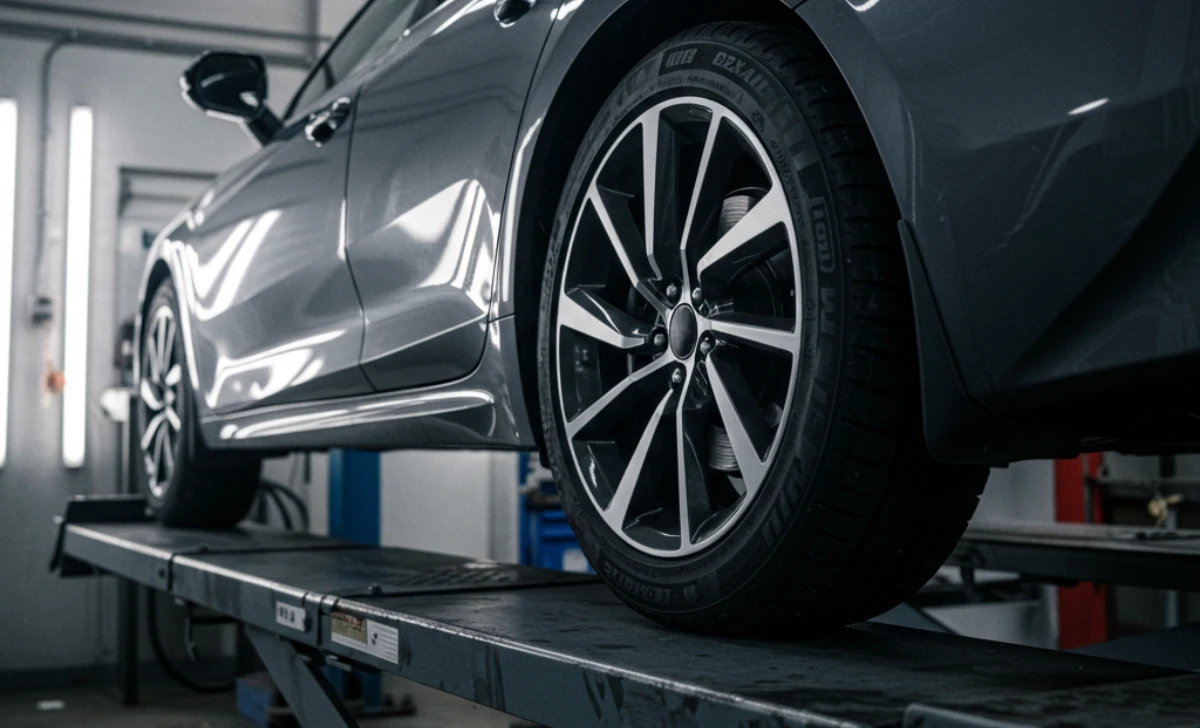Are your front tires looking more worn out than your back ones? Do you hear that nagging voice in your head wondering if you’re overdue for some basic car maintenance? You’re not alone. Figuring out exactly how often to rotate tires can be confusing, but ignoring it can cost you real money and even compromise your safety on the road.
Don’t worry, this isn’t complicated. In this guide, we’ll give you a crystal-clear answer and break down everything you need to know in just a few minutes.
After reading, you will know the perfect tire rotation schedule for your specific car, why it’s so important, and how to keep your tires in great shape for years to come.
Why Bother Rotating Your Tires, Anyway?
Before we get to the “when,” let’s quickly cover the “why.” Rotating your tires is one of the simplest and most effective things you can do for your vehicle.
- Promotes Even Tread Wear: Your front tires usually wear down faster than the rear ones, especially on a front-wheel-drive car. They handle most of the steering and braking forces. Rotation ensures all four tires wear down evenly.
- Extends Tire Life: Evenly worn tires last much longer. This means you won’t have to buy a new set as often, saving you hundreds of dollars.
- Improves Safety and Performance: When your tires wear evenly, your car handles more predictably. This improves traction, cornering, and braking, which is crucial for staying safe in all weather conditions.
- Keeps Your Warranty Valid: Many tire manufacturers require regular rotations to keep the warranty on your tires active.
The General Rule: How Often to Rotate Tires
If you’re looking for a quick and simple answer, here it is. But remember, the best answer is always the one tailored to your car.
The 5,000 to 8,000 Mile Guideline
For most vehicles, the standard recommendation is to rotate your tires every 5,000 to 8,000 miles (or roughly every 8,000 to 13,000 kilometers).
A super easy way to remember this is to have your tires rotated every time you get your oil changed. Just ask the mechanic to do it while your car is already on the lift. It’s a simple add-on that makes a huge difference.
Check Your Owner’s Manual: The Golden Rule
While the 5,000-8,000 mile rule is a great starting point, the absolute best advice comes directly from the people who built your car. Your vehicle’s owner’s manual will have the exact recommended interval for tire rotation. Always follow this recommendation for the best results.
Key Factors That Can Change the Schedule
Not every car or driver is the same. Several things can affect how often you should be rotating your tires.
Your Vehicle’s Drivetrain (FWD, RWD, AWD)
The way your car delivers power to the wheels drastically changes how your tires wear.
- Front-Wheel Drive (FWD): The front tires do all the work of pulling the car and steering, so they wear much faster. Rotation is very important.
- Rear-Wheel Drive (RWD): The back tires handle the power, while the front ones handle steering. Wear is more balanced than FWD, but rotation is still crucial.
- All-Wheel Drive (AWD): The system sends power to all four wheels, but it’s rarely perfectly even. Regular rotations are essential to prevent damage to the drivetrain. In fact, as experts at Bridgestone explain in their Tire Rotation 101 guide, evenly worn tires are critical on AWD vehicles to lower stress on expensive drive components and maintain proper performance.
Your Driving Habits and Conditions
Are you an aggressive driver who loves fast starts and sharp turns? Or do you mostly cruise on smooth highways?
- Aggressive Driving: Hard braking and fast cornering will wear your tires out much quicker, meaning you should rotate them more often.
- Heavy Loads: If you often carry heavy cargo or tow a trailer, your tires are under more stress and will need more frequent attention.
- Road Conditions: Driving on rough, unpaved, or pothole-filled roads will also accelerate tire wear.
Pro Tips for Success
- Check Tire Pressure: When you rotate your tires, it’s the perfect time to check the air pressure. Properly inflated tires wear more evenly and improve your gas mileage.
- Inspect Your Tires: Use this opportunity to look for any nails, cuts, or bulges in the sidewalls. Catching a problem early can prevent a dangerous blowout later.
- Keep a Record: Write down the date and mileage of each rotation in a small notebook or your phone. This helps you stay on schedule and track the health of your tires.
Frequently Asked Questions (FAQ)
What happens if I never rotate my tires?
If you never rotate your tires, they will wear unevenly. This leads to a much shorter tire lifespan, poor handling, reduced traction (especially in rain or snow), and loud road noise. Ultimately, you’ll have to replace them much sooner and may put your safety at risk.
Is it okay to rotate tires every 10,000 miles?
For most vehicles, 10,000 miles is too long to wait between rotations. By then, a significant uneven wear pattern may have already started. However, some specific vehicles or tire types might have longer intervals, so always check your owner’s manual first. If it doesn’t specify, stick closer to the 5,000-8,000 mile range.
Can I rotate my own tires at home?
Yes, you can! If you have the right tools—a car jack, jack stands for safety, and a lug wrench—you can rotate your tires yourself. Just make sure you know the correct rotation pattern for your vehicle (it’s often in the owner’s manual) and always prioritize safety by using jack stands on level ground.
Conclusion
Staying on top of your tire rotation schedule is a simple task that pays off big. By rotating your tires every 5,000 to 8,000 miles—or as recommended in your owner’s manual—you’ll ensure they last longer, perform better, and keep you safer on the road.
For more helpful guides and solutions, visit howtoresults.com to explore our wide range of how-to articles.
















Leave a Review